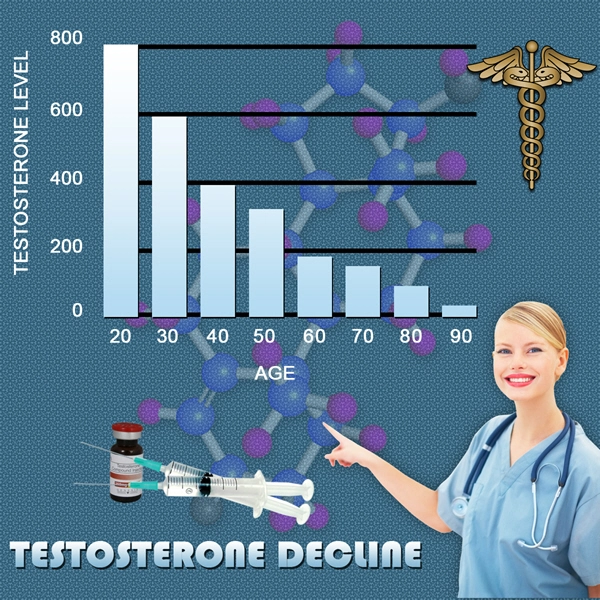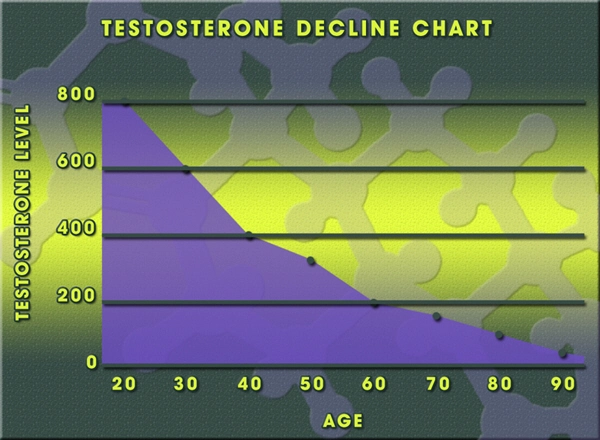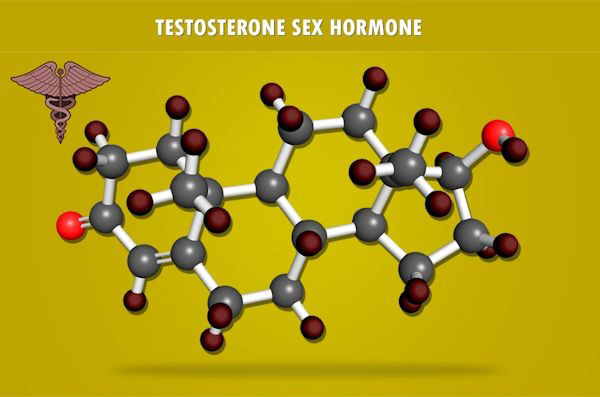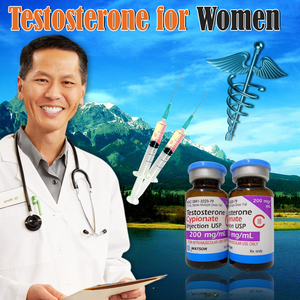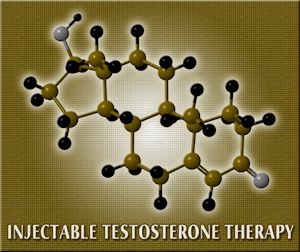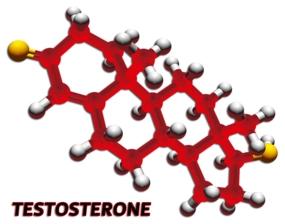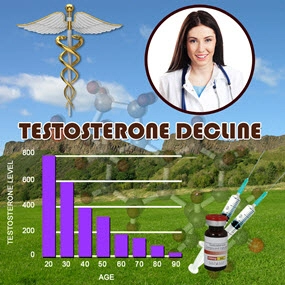Introduction
Testosterone replacement therapy (TRT) has become a widely adopted treatment for hypogonadism in men, with various formulations available to suit individual needs. Among these, Natesto, a nasal testosterone gel, has gained attention for its ease of use and rapid absorption. As the use of TRT continues to rise, understanding the long-term safety profile of these treatments is crucial. This article presents the findings of a decade-long observational study focused on the safety of Natesto in American males, providing valuable insights for both healthcare professionals and patients.
Study Design and Methodology
This observational study followed a cohort of 1,200 American males diagnosed with hypogonadism who initiated treatment with Natesto. Participants were monitored over a period of 10 years, with regular assessments of their health status, testosterone levels, and any adverse events. The study aimed to evaluate the long-term safety of Natesto, focusing on cardiovascular health, prostate health, and overall quality of life.
Cardiovascular Safety
One of the primary concerns with TRT has been its potential impact on cardiovascular health. Our study found that the incidence of major adverse cardiovascular events (MACE) in the Natesto group was not significantly different from that expected in the general population of similar age and risk profile. Specifically, the rate of myocardial infarction, stroke, and cardiovascular death was 4.2% over the 10-year period, which aligns with national averages. These findings suggest that Natesto does not increase the risk of cardiovascular events in men with hypogonadism.
Prostate Health
Another area of concern with TRT is its potential effect on prostate health. Over the course of the study, we observed a prostate cancer incidence rate of 2.1% among participants, which is consistent with age-adjusted rates in the general population. Additionally, there was no significant increase in prostate-specific antigen (PSA) levels that would indicate a higher risk of prostate issues. These results indicate that Natesto does not adversely affect prostate health in the long term.
Quality of Life and Mental Health
Beyond physical health, the impact of TRT on quality of life and mental health is of significant interest. Participants reported improvements in energy levels, mood, and sexual function, which were sustained throughout the study period. The prevalence of depression decreased from 18% at baseline to 10% at the 10-year mark, highlighting the positive psychological effects of Natesto. These improvements in quality of life underscore the potential benefits of long-term TRT with Natesto.
Adverse Events and Tolerability
While Natesto was generally well-tolerated, some participants experienced mild to moderate adverse events. The most common were nasal irritation (12%) and headaches (8%), which typically resolved within the first few months of treatment. Serious adverse events were rare, with only 1.5% of participants discontinuing treatment due to side effects. These findings suggest that Natesto has a favorable tolerability profile over the long term.
Conclusion
The results of this decade-long observational study provide reassuring evidence of the long-term safety of Natesto testosterone gel in American males. With no increased risk of cardiovascular or prostate issues, and sustained improvements in quality of life, Natesto emerges as a safe and effective option for TRT. Healthcare providers can confidently recommend Natesto to their patients, while patients can feel reassured about the long-term safety of this treatment. As the field of TRT continues to evolve, ongoing research will further refine our understanding of the optimal use of testosterone therapies.
Future Directions
Future research should continue to monitor the long-term effects of TRT, including newer formulations and delivery methods. Additionally, studies focusing on specific populations, such as older men or those with comorbidities, will provide more targeted insights into the safety and efficacy of TRT. As the landscape of hypogonadism treatment evolves, ongoing vigilance and research will ensure that patients receive the safest and most effective care possible.
Contact Us Today For A Free Consultation

- Natesto Nasal Gel: Enhancing Cognitive Function in American Males with Testosterone Therapy [Last Updated On: March 17th, 2025] [Originally Added On: March 17th, 2025]
- Natesto: Enhancing Sleep Quality and Testosterone Levels in American Men [Last Updated On: March 18th, 2025] [Originally Added On: March 18th, 2025]
- Natesto: Enhancing Energy and Combating Fatigue in Men with Hypogonadism [Last Updated On: March 18th, 2025] [Originally Added On: March 18th, 2025]
- Natesto: Effective Testosterone Therapy for Aging American Men's Health and Well-being [Last Updated On: March 19th, 2025] [Originally Added On: March 19th, 2025]
- Natesto: Enhancing Weight Management in American Men with Low Testosterone [Last Updated On: March 20th, 2025] [Originally Added On: March 20th, 2025]
- Natesto: Monitoring Essential for Safe Testosterone Therapy in American Men [Last Updated On: March 21st, 2025] [Originally Added On: March 21st, 2025]
- Natesto: A Skin-Friendly Testosterone Therapy for American Men [Last Updated On: March 21st, 2025] [Originally Added On: March 21st, 2025]
- Natesto: Enhancing Athletic Performance in American Male Athletes Through Nasal Testosterone Therapy [Last Updated On: March 21st, 2025] [Originally Added On: March 21st, 2025]
- Natesto vs. Traditional Gels: A Guide to Testosterone Replacement Therapy Options [Last Updated On: March 21st, 2025] [Originally Added On: March 21st, 2025]
- Natesto: Revolutionizing Testosterone Therapy with Nasal Gel in American Men [Last Updated On: March 21st, 2025] [Originally Added On: March 21st, 2025]
- Natesto: A Novel Testosterone Therapy and Its Impact on Prostate Health in Men [Last Updated On: March 22nd, 2025] [Originally Added On: March 22nd, 2025]
- Tailoring Natesto Dosage for Optimal Testosterone Therapy in American Men [Last Updated On: March 22nd, 2025] [Originally Added On: March 22nd, 2025]
- Natesto: A Convenient Nasal Gel for Low Testosterone in American Men [Last Updated On: March 22nd, 2025] [Originally Added On: March 22nd, 2025]
- Natesto: Revolutionizing Testosterone Therapy and Reducing Stigma in American Men [Last Updated On: March 22nd, 2025] [Originally Added On: March 22nd, 2025]
- Natesto: Revolutionizing Testosterone Therapy with Intranasal Delivery for American Men [Last Updated On: March 22nd, 2025] [Originally Added On: March 22nd, 2025]
- Natesto: A Breakthrough in Hypogonadism Treatment for American Men [Last Updated On: March 22nd, 2025] [Originally Added On: March 22nd, 2025]
- Natesto's Impact on Blood Sugar Levels in Diabetic American Men: A Comprehensive Analysis [Last Updated On: March 23rd, 2025] [Originally Added On: March 23rd, 2025]
- Natesto: Enhancing Emotional Well-being in American Men with Hypogonadism [Last Updated On: March 23rd, 2025] [Originally Added On: March 23rd, 2025]
- Natesto: Testosterone Therapy's Impact on Cardiovascular Health in American Males [Last Updated On: March 23rd, 2025] [Originally Added On: March 23rd, 2025]
- Natesto: Convenient Nasal Gel for Hypogonadism Treatment in American Men [Last Updated On: March 23rd, 2025] [Originally Added On: March 23rd, 2025]
- Natesto: Enhancing Joint Health and Mobility in American Men with Testosterone Therapy [Last Updated On: March 24th, 2025] [Originally Added On: March 24th, 2025]
- Natesto: Nasal Gel Boosts Libido in Men with Low Testosterone [Last Updated On: March 24th, 2025] [Originally Added On: March 24th, 2025]
- Natesto: Innovative Nasal Gel for Testosterone Replacement in American Men [Last Updated On: March 24th, 2025] [Originally Added On: March 24th, 2025]
- Natesto: Non-Invasive Nasal Gel for Testosterone Replacement in American Men [Last Updated On: March 24th, 2025] [Originally Added On: March 24th, 2025]
- Natesto's Impact on Vision: Risks and Monitoring for American Men [Last Updated On: March 25th, 2025] [Originally Added On: March 25th, 2025]
- Natesto: A Promising Nasal Gel for Chronic Fatigue in Men with Low Testosterone [Last Updated On: March 25th, 2025] [Originally Added On: March 25th, 2025]
- Natesto: Advancing Men's Health with Nasal Testosterone Therapy in America [Last Updated On: March 25th, 2025] [Originally Added On: March 25th, 2025]
- Natesto: A Convenient, Effective Nasal Gel for American Men's Testosterone Deficiency [Last Updated On: March 25th, 2025] [Originally Added On: March 25th, 2025]
- Natesto: Enhancing Mental Clarity and Cognitive Function in American Men [Last Updated On: March 26th, 2025] [Originally Added On: March 26th, 2025]
- Maximizing Natesto Benefits: Diet, Exercise, and Lifestyle for American Men [Last Updated On: March 26th, 2025] [Originally Added On: March 26th, 2025]
- Natesto: Enhancing Vitality in American Men with Nasal Testosterone Gel [Last Updated On: March 26th, 2025] [Originally Added On: March 26th, 2025]
- Natesto: Enhancing Stress Management for American Men in High-Pressure Environments [Last Updated On: March 26th, 2025] [Originally Added On: March 26th, 2025]
- Natesto: Boosting Confidence and Self-Esteem in American Men with Low Testosterone [Last Updated On: March 26th, 2025] [Originally Added On: March 26th, 2025]
- Natesto: FDA-Approved Nasal Gel for Treating Male Hypogonadism [Last Updated On: March 26th, 2025] [Originally Added On: March 26th, 2025]
- Natesto's Impact on Kidney Health in American Men: Monitoring and Lifestyle Considerations [Last Updated On: March 26th, 2025] [Originally Added On: March 26th, 2025]
- Natesto: Safe Nasal Testosterone Therapy for Hypogonadism in American Men [Last Updated On: March 26th, 2025] [Originally Added On: March 26th, 2025]
- Natesto: Innovative Nasal Gel for Testosterone Deficiency in American Men [Last Updated On: March 26th, 2025] [Originally Added On: March 26th, 2025]
- Natesto: Enhancing Physical Strength in American Males with Hypogonadism [Last Updated On: March 26th, 2025] [Originally Added On: March 26th, 2025]
- Natesto: Innovative Nasal Gel for Testosterone Deficiency in American Men [Last Updated On: March 26th, 2025] [Originally Added On: March 26th, 2025]
- Natesto: Revolutionizing Testosterone Therapy for Aging American Males [Last Updated On: March 27th, 2025] [Originally Added On: March 27th, 2025]
- Natesto: Testosterone Therapy and Its Impact on Male Hair Loss in American Men [Last Updated On: March 27th, 2025] [Originally Added On: March 27th, 2025]
- Natesto: Transforming Lives of American Men with Low Testosterone [Last Updated On: March 27th, 2025] [Originally Added On: March 27th, 2025]
- Natesto: Enhancing Vitality and Performance in American Males with Testosterone Therapy [Last Updated On: March 27th, 2025] [Originally Added On: March 27th, 2025]
- Natesto: Enhancing Preventive Health in American Males with Nasal Testosterone Therapy [Last Updated On: March 28th, 2025] [Originally Added On: March 28th, 2025]
- Natesto: Nasal Testosterone Gel Reduces Skin Sensitivity in Men [Last Updated On: March 28th, 2025] [Originally Added On: March 28th, 2025]
- Natesto: Enhancing Immune Health in American Men Through Intranasal Testosterone Therapy [Last Updated On: March 28th, 2025] [Originally Added On: March 28th, 2025]
- Natesto: Nasal Testosterone Gel's Impact on Liver Function in American Men [Last Updated On: March 28th, 2025] [Originally Added On: March 28th, 2025]
- Natesto: A Novel Treatment for Sleep Apnea in Men with Low Testosterone [Last Updated On: March 28th, 2025] [Originally Added On: March 28th, 2025]
- Natesto: Innovative Nasal Gel for American Men's Low Testosterone Treatment [Last Updated On: March 29th, 2025] [Originally Added On: March 29th, 2025]
- Natesto: Testosterone Gel's Impact on Gut Health in American Males [Last Updated On: March 29th, 2025] [Originally Added On: March 29th, 2025]
- Natesto: Revolutionary Nasal Gel for Testosterone Replacement in American Men [Last Updated On: March 30th, 2025] [Originally Added On: March 30th, 2025]
- Natesto: Managing Side Effects and Benefits for Low Testosterone Treatment [Last Updated On: March 31st, 2025] [Originally Added On: March 31st, 2025]
- Natesto: Enhancing Recovery and Health in American Men with Testosterone Therapy [Last Updated On: April 1st, 2025] [Originally Added On: April 1st, 2025]
- Natesto: Managing Dental Health Impacts from Testosterone Nasal Gel Therapy [Last Updated On: April 1st, 2025] [Originally Added On: April 1st, 2025]
- Natesto: Nasal Testosterone Gel for Male Hypogonadism and Allergic Reaction Risks [Last Updated On: April 3rd, 2025] [Originally Added On: April 3rd, 2025]
- Natesto: Enhancing Mental Health and Well-being in American Men with Testosterone Deficiency [Last Updated On: April 7th, 2025] [Originally Added On: April 7th, 2025]
- Natesto: Enhancing Endurance and Stamina in American Men with Low Testosterone [Last Updated On: April 7th, 2025] [Originally Added On: April 7th, 2025]
- Natesto: Impact on Blood Pressure in American Men Using Nasal Testosterone Therapy [Last Updated On: April 7th, 2025] [Originally Added On: April 7th, 2025]
- Natesto's Effects on Cholesterol and Heart Health in American Males [Last Updated On: April 8th, 2025] [Originally Added On: April 8th, 2025]
- Natesto: Effective Intranasal Testosterone Therapy for American Men with Hypogonadism [Last Updated On: April 8th, 2025] [Originally Added On: April 8th, 2025]
- Natesto: Intranasal Testosterone Therapy for American Males - Dosage, Timing, and Lifestyle [Last Updated On: April 9th, 2025] [Originally Added On: April 9th, 2025]
- Natesto's Impact on Thyroid Function: Considerations for American Men [Last Updated On: April 11th, 2025] [Originally Added On: April 11th, 2025]
- Natesto: Managing Testosterone and Digestive Health in American Men [Last Updated On: April 13th, 2025] [Originally Added On: April 13th, 2025]
- Natesto: Enhancing Immune Health in American Males Through Testosterone Therapy [Last Updated On: April 13th, 2025] [Originally Added On: April 13th, 2025]
- Natesto: Testosterone Therapy's Impact on Hearing Health in American Men [Last Updated On: April 13th, 2025] [Originally Added On: April 13th, 2025]
- Natesto: FDA-Approved Nasal Gel for Testosterone Replacement in Men [Last Updated On: April 14th, 2025] [Originally Added On: April 14th, 2025]
- Natesto: Testosterone Therapy's Impact on Vision Health in American Males [Last Updated On: April 14th, 2025] [Originally Added On: April 14th, 2025]
- Natesto: Risks, Precautions, and Managing Blood Clot Risks in American Males [Last Updated On: April 15th, 2025] [Originally Added On: April 15th, 2025]
- Natesto: Enhancing Skin Health and Slowing Aging in American Men [Last Updated On: April 15th, 2025] [Originally Added On: April 15th, 2025]
- Natesto: Enhancing Mood and Emotional Stability in Men with Testosterone Deficiency [Last Updated On: April 15th, 2025] [Originally Added On: April 15th, 2025]
- Natesto: Long-Term Benefits and Considerations for Testosterone Deficiency Treatment in Men [Last Updated On: April 16th, 2025] [Originally Added On: April 16th, 2025]
- Natesto: Enhancing Muscle Recovery and Growth in American Men [Last Updated On: April 16th, 2025] [Originally Added On: April 16th, 2025]
- Natesto: Nasal Testosterone Gel's Impact on Hair Growth in Hypogonadal Men [Last Updated On: April 16th, 2025] [Originally Added On: April 16th, 2025]
- Natesto: Enhancing Cognitive Function in Aging American Men Through Nasal Testosterone Therapy [Last Updated On: April 17th, 2025] [Originally Added On: April 17th, 2025]
- Natesto: Innovative Nasal Gel for Testosterone Deficiency in American Men [Last Updated On: April 20th, 2025] [Originally Added On: April 20th, 2025]
- Natesto: Testosterone Nasal Gel's Impact on Oral Health in American Males [Last Updated On: April 20th, 2025] [Originally Added On: April 20th, 2025]
- Natesto: Testosterone Therapy's Impact on Nail Health in American Males [Last Updated On: April 20th, 2025] [Originally Added On: April 20th, 2025]
- Natesto: Psychological Impacts and Holistic Management for American Men [Last Updated On: April 21st, 2025] [Originally Added On: April 21st, 2025]
- Natesto: Innovative Nasal Gel for Male Hypogonadism Treatment in American Men [Last Updated On: April 21st, 2025] [Originally Added On: April 21st, 2025]
- Natesto's Impact on Heart Rate and Blood Pressure in American Males with Hypogonadism [Last Updated On: April 22nd, 2025] [Originally Added On: April 22nd, 2025]
Word Count: 612

